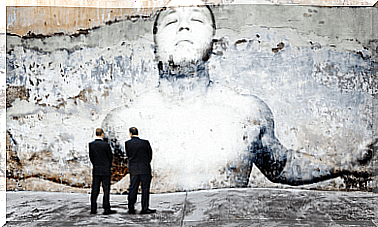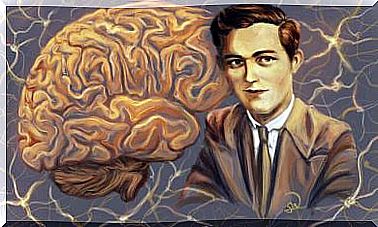Trypophobia Or The Fear Of Geometric Figures Together

In “The Mind is Wonderful” we like to present curiosities within the world of psychology, always from the respect and from the perspective that the best way to make a better, more comprehensive and more open world is by making it known to its full extent and complexity.
In this case we will talk about Trypophobia. It is so peculiar and controversial, that the first question we could ask is , does Tripophobia really exist or is it just a feeling that does not go beyond a simple animosity?
What is Trypophobia?
Tryptophophobia or Trypophobia from the Greek Tripo-perforation and fear-phobia , is fear or repulsion for geometric figures close together such as holes or small rectangles. Honeycombs, fungi, ant hills, heads in lotus seeds … are causing phobia in some people who experience sweating, rapid heartbeat, nausea, tingling, itching and even panic attacks.
Why is Trypophobia so controversial?
The truth is that Tryptophobia is not recognized in the DSM, the Diagnostic Manual of mental illnesses par excellence, used as a reference throughout the world. On the other hand, Antonio Cano, President of the Spanish Society for the Study of Anxiety and Stress, affirms that he has not seen a single case of Tryptophophobia in his 30 years of experience as a psychologist …
However, Arnold Wilkins and Geoff Cole were the first to study Trypophobia; they state in a study published in “Psychological Science” that “it could be the result of an evolutionary visual function, which developed during human evolution, related to some poisonous animals. For this reason, it is different from other phobias, which are based on the learned cultural component ”.
On the other hand, it must be said that many people confuse Trypophobia with dermatophobia or the phobia of infections, rashes or skin lesions, which take place in the eye area and which can cause some fear, disgust or repulsion.
We offer you this video so that you can decide whether or not the images correspond to Trypophobia …
Phobias
The truth is that many experts say that we all have at least one phobia. In fact there are about 250 phobias described in the scientific literature, some really striking for the human being, curious by nature.
For example, Helmintophobia or the fear of worms, Tremophobia or the fear of tremors, Anginophobia or the fear of choking … either way, only a specialist is the one who can best diagnose when suffering from phobia and how to try to alleviate it or lessen it.
But when can we detect ourselves that we have a phobia? and Why do they appear?
1. When our fear is very marked and persists over time.
2. When we avoid our fear. For example, we never get on the elevator, we prefer the stairs; We never take the plane, we opt for the boat or the car; We do not go to friends’ houses who have animals that scare us in an excessive way like large dogs or lose a job because of the fear of change.
Phobias can appear for different reasons:
1. Due to overprotection of our loved ones, usually our parents.
2. For having seen other people with a phobia. What happens is that we imitate it unconsciously, we learn to give the same response to that stimulus.
3. For having previously experienced a traumatic situation related to our fear. For example, having suffered an attack by a dog, having been locked in an elevator or in a public service, etc.
How can we overcome a phobia?
1. One of the best treatments is to expose the patient to his own fear little by little, however this must be done by a professional. For example, if your phobia is the elevators, you can start by just observing it and then putting only one foot, then going up only one floor, but little by little, without pressure.
2. It is also good to give a lot of information to the patient about his phobia, about his fear, so that he can gain confidence and lose fear.
3. Of course, the person should be the first to decide that he wants to overcome his phobia so that the professional can help him. It is also very important that the person in question and those around him, value every little achievement that is achieved to overcome the phobia.
4. Other guidelines to follow are learning relaxation techniques that we can do before going to sleep; We can also tell our loved ones about our phobia.









